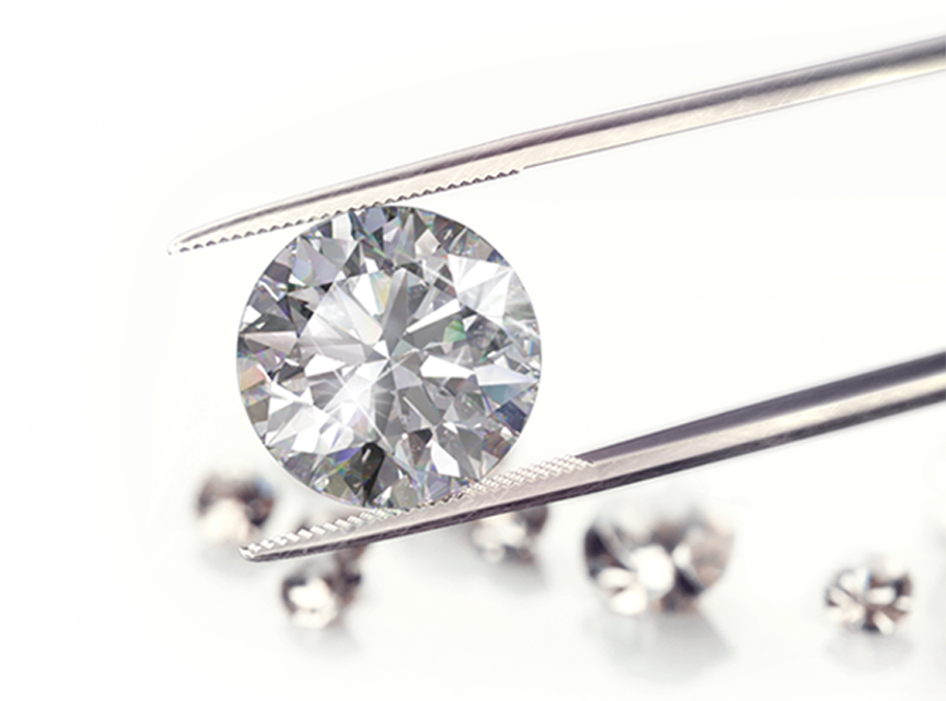What Is Diamond Tinge and Milkiness - Natural Diamonds
Why is there such a large difference in price between the lowest and highest priced 1ct E VS2 Ex Ex Ex Natural diamond? Most people would be a tad confused at this. Even some jewellers. The short answer, milkiness and tinge. Image below will showcase the difference


If the majority of diamonds you’re searching for are in the $13,000 range and then you come across one similarly graded with a GIA report to match for $10,700. No it's not a bargain or a good deal. Its something that should raise an eyebrow.
Diamond milkiness, also known as haziness or cloudiness, is a whitish or cloudy appearance that can make a diamond appear dull or opaque. It is caused by microscopic inclusions or surface blemishes that scatter light and interfere with its transmission through the diamond. This can reduce the diamond's brilliance and fire, and make it appear less transparentMilkiness is one detrimental flaw which can make or break even a D VVS1 diamond. It doesn't discriminate. Essentially the diamond looks blurry or “milky”. It isnt mentioned clearly on a GIA certificate. Yes sometimes there can be comments saying clouds, but you can have beautiful non milky diamonds and still have the comment of clouds. This is where things get confusing.

So how do we find out if the diamond we’re buying is amazing or the most expensive disappointment waiting to happen. That comes down to the jewellers intuition and experience.
First clue would be looking at the video to ascertain if it does seem to be a milky diamond. Hard for the layman to spot but a skilled jeweller with experience buying diamonds directly from the manufacturers should be able to spot it. Second would be the price, is it an outlier or is it within the range of the other diamonds in question.

Milky Diamond - Notice the cloudiness

Non-Milky Diamond. Notice how clear it looks, no bluriness present.
Now the jeweller does have the information advantage, they should be able to tap into the supplier side data which gives more detail than that of the GIA report, see examples below. The areas to focus on are circled.

Luster: Options are Ex- VG- G. Always Ex (Excellent) never anything less. Period. Milky: Options are M0 M1 M2. Always M0, M1 is bad, M2 is a disaster. Ask your jeweller about this and I’ll bet most wouldn't know how to answer.Long story short, Milkiness is the kryptonite for a diamond and not always easy to spot. To add to the difficulty, theres also tinge to worry about. Say we found a diamond that had no milkiness, D colour, VVS1, EX cut … could still have only VG or G luster. So Whats the issue? Tinge. Consider it the secondary colour gauge of a diamond. Could be Brown, yellow, blue. Would make a D colour diamond showcase as a G colour. Once again, not listed on the GIA certificate. Only way to tell is by the video with a trained eye or supplier side data that the jeweller should look at.

Now this all sounds rather difficult to navigate with traps left right and centre but trust in your jeweller to do you right and not palm off a lack luster diamond as a “good deal”. Our ace up our sleeve at Annys, ontop of our experienced diamond hunters. Is our independent Quality control check under taken before each diamond is shipped from overseas to australia. We contract an independent party to examine the diamond pre -purchase when a client requests to purchase a stone. If we get the green light, the show goes on. If theres a questionable characteristic raised in the QC we go back to the drawing board and find another option for the client.
Rest assured, we only say yes to a diamond if we are 110% confident.
Heres an example We’ve got a diamond that is Non - Milky. Excellent lustre. Decent G colour. But with Very Light brown Tinge. Yet nowhere on the GIA certificate is this notion of tinge/shade mentioned.Its a dangerous game trying to get the cheapest diamond, this is why.Ive made a comparison of two very similar diamonds from the same supplier. One Tinged one not.
Bad Diamond with tinge

Good Diamond No tinge





































